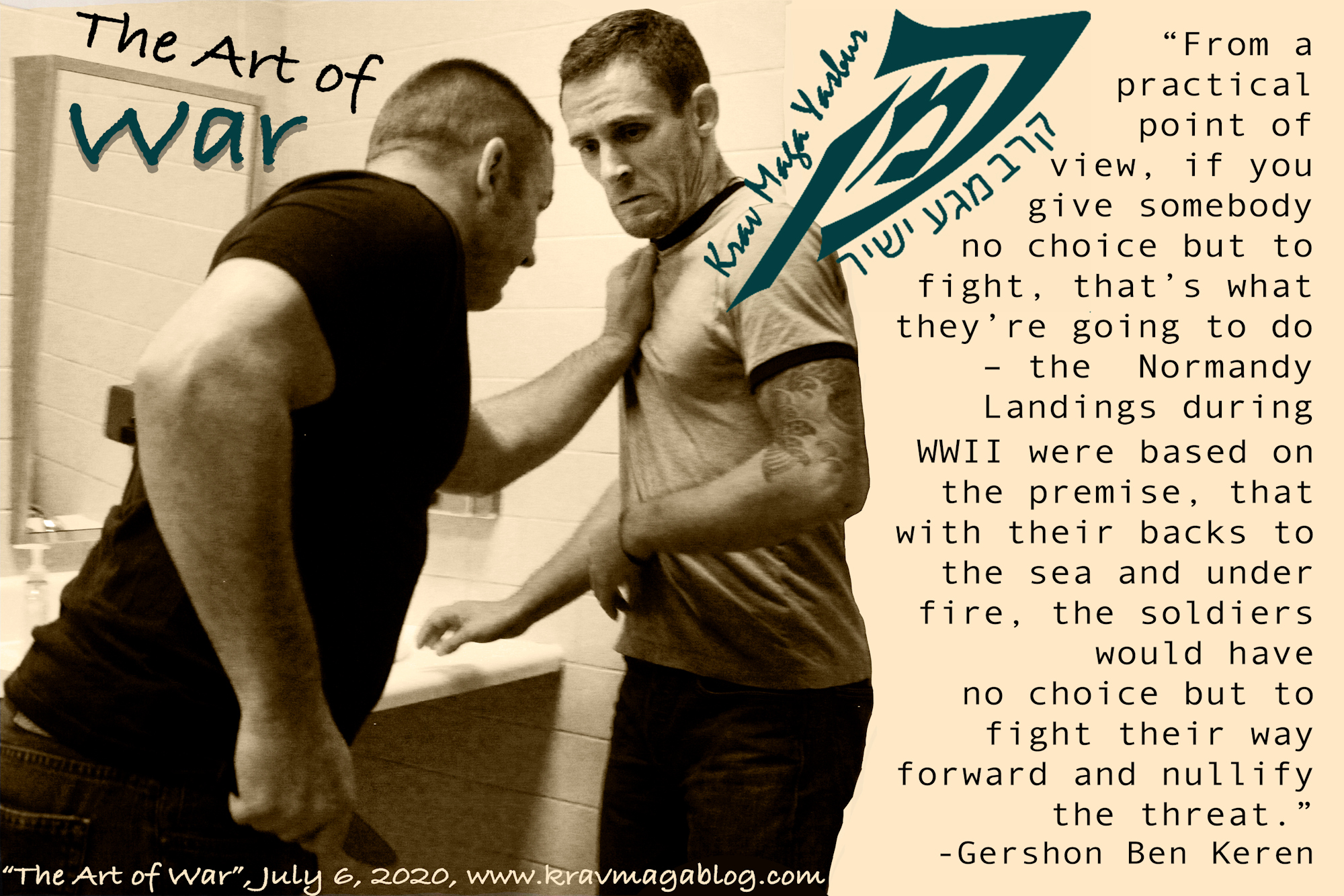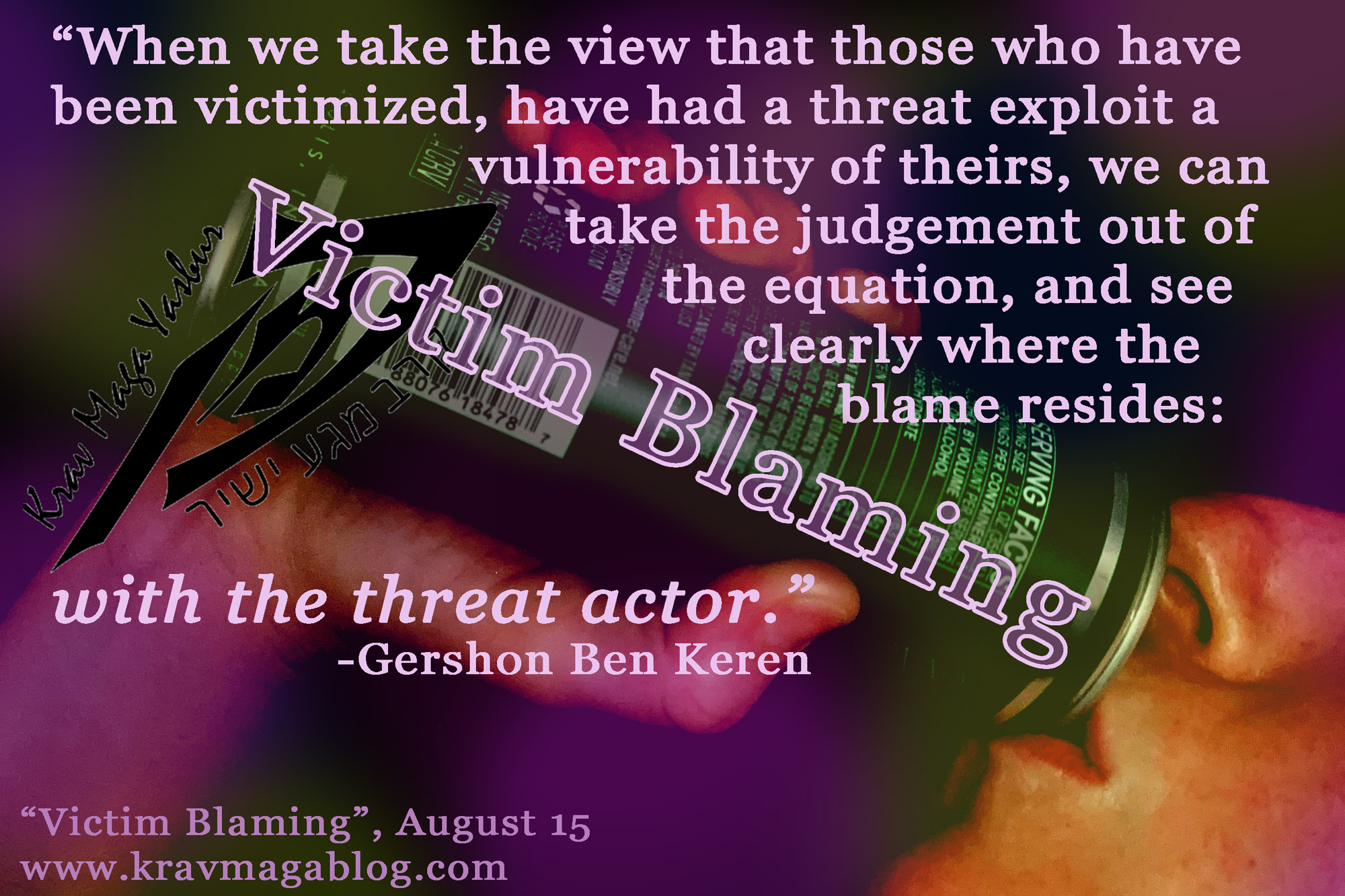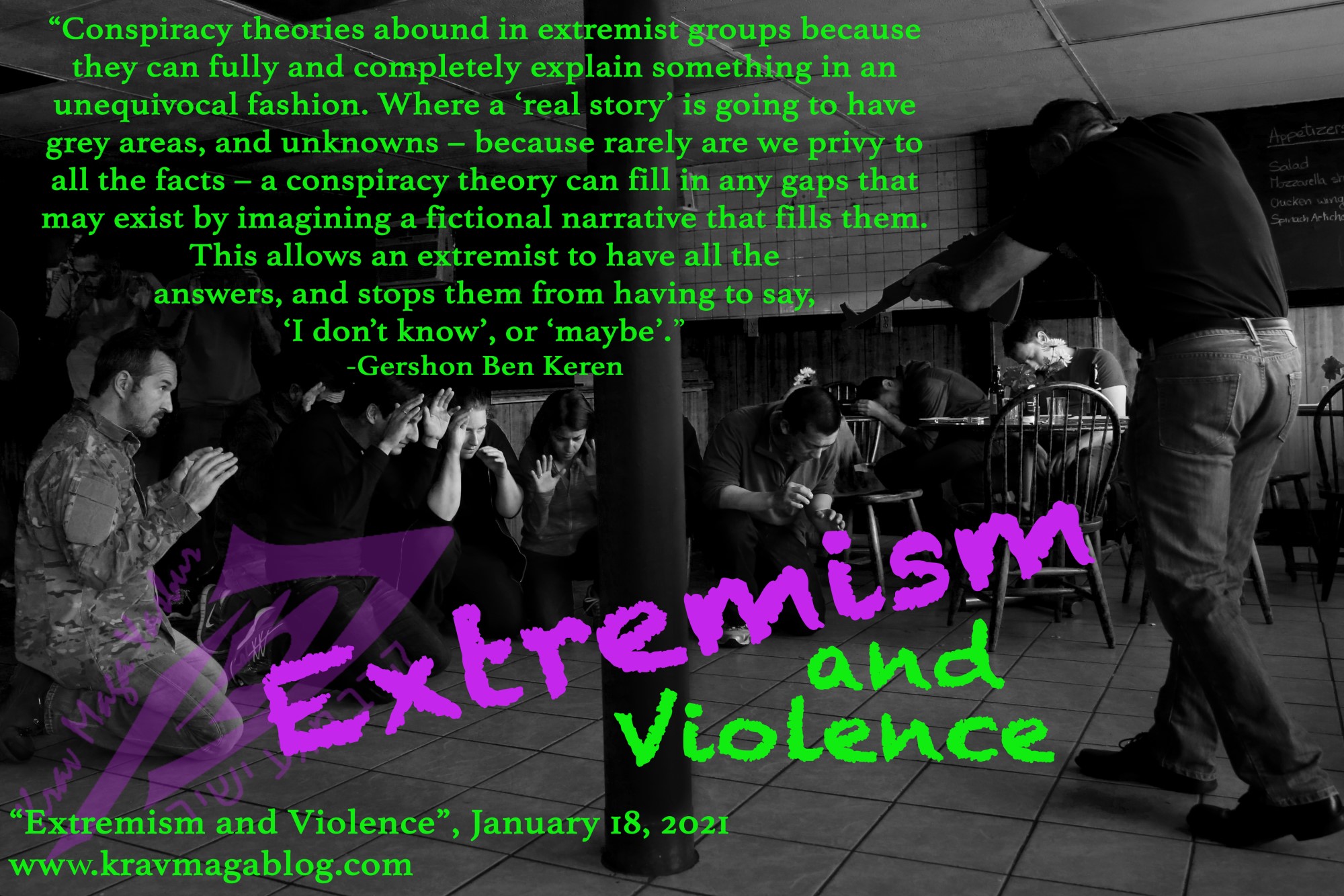Training for Reality - Putting the Pieces Together, is an article written by Gershon Ben Keren, a 5th Degree Black Belt in Krav Maga, who teaches Krav Maga in Boston, MA. He has also authored three Amazon best-Selling Books on Krav Maga.
You can’t simply create reality in training; unless as a “surprise” element, you invited a street gang in to attack your students, without warning – and then you’d only be creating a certain type of reality, as this wouldn’t resemble every potential situation a person might face etc. To train for reality, you need to put several components together, sometimes training and developing them individually, and sometime blurring the lines between them, and combining them. A short (but not exhaustive list) is offered below:
- Techniques & Technical Development
- Skills & Attributes
- Physical Fitness & Aggression Training
- Threat Recognition & Decision Making
- Situational Training
There is probably no more contentious area in the reality based self-defense world than the discussion over techniques i.e. what will or won’t work on the streets etc. and yet to my mind this is perhaps the least important of the five components I’ve listed. I have heard so many times people from one system or another make loud proclamations, about why one technique or another taught by another system/program will not work. What most of these individuals fail to realize, that it is the physical skills and athletic attributes that an individual has who practices this technique, which makes it work for them. Can a high kick work in a real-life confrontation? If you have the skills and attributes to make it work, of course. I personally don’t have those skills, and have better developed skills in other areas, so high kicks are definitely not my first option, but it is not for me to proclaim that these techniques don’t work. Certain weapon disarms, might at first glance, seem crazy and illogical to me, but then my initial position is could I do that, not could another person with the appropriate skill set and training, pull it off? Don’t get me wrong, I do believe there are techniques, which stand a better chance of working than others when operating under high stress and adrenaline, but what makes a technique really work, is the skills and attributes of the person performing it.
I teach Krav Maga. Krav Maga techniques by and large try not to rely too much on the development of skills and attributes in order to get them to work i.e. they’re largely simple (but not simplistic), and rely on innate skills, such as the flinch reflex, grabbing/clasping arms and hand that grab the throat and neck etc. rather than skills which must be developed. As an entry point, and a quick grab at some “easy” solutions to dealing with attacks, this approach is fine, however to improve a person’s chances of getting these techniques to actually work in a real-life confrontation, a person’s skills must be developed. Blocking, circular strikes (such as swinging punches, wide arcing slashes etc.) using a flinch response is largely effective, but if an individual’s movement skills, control of range and reaction time can be developed, its likely success rate will improve dramatically. Many people judge their progression through a martial arts or self-defense system by what they know, rather than what they can do.
To the annoyance of many reality based self-defense instructors, I will add that the best methods to develop skills and attributes, usually come from “sport” and “traditional” martial arts. I use a lot of range control drills that are taken from western boxing, and a lot of power development drills and methods from the traditional martial arts. This doesn’t mean I am teaching MMA (Mixed Martial Arts), but that I am using methods and approaches to develop certain skills that will enhance an individual’s ability to make their Krav Maga techniques more effective e.g. want to punch harder? Look at the training methods boxers and Karatekas use to develop this skill.
Some of the skills than may need to be developed, will be determined by the realities that a person is likely to face. A large number of bar fights, start with a heavy push before a punch is thrown, putting techniques aside, is a person can’t regain balance, and stability after being pushed, it doesn’t matter how technically competent they are. Recovering from a push, when surprised, may be a particular and specific skill that somebody training for reality may have to develop.
I combine physical fitness and aggression training together, despite them really being two separate sets of attributes, as they offer a good demonstration how different components can be combined. Giving someone a good physical workout, and taking them to fatigue, and then practicing a technique, develops several things. Firstly the person training is improving their fitness (having the gas in the tank, is required even if you have all the appropriate skills and techniques), which is extremely important when looking at the things you need to survive a real-life violent encounter, however they are also getting to train a technique when fatigued, which is also important. When the effects of adrenaline starts to wear off, a person will start to feel, tired, exhausted, weak and generally fatigued, however if they are in the middle of a fight, they can’t just give up. This is where sheer will power and an aggressive mindset, really come into their own. Developing a “Never Give Up” attitude is an extremely important attribute to have, especially when you consider that most fights end because one person, although physically capable of continuing, emotionally crumbles and gives up.
Perhaps the most underestimated skills needed for real-life confrontations is threat recognition and decision making. When you train in a combat sport, the different number of threats you have to recognize is limited by the rules. Boxing is a good example of this, as there are a limited number of potential punches you can face – what makes boxing challenging is the high skill levels, behind those few techniques/threats, and the way that different punches are set up, however a boxer knows that they don’t have to worry about somebody being behind them with a knife etc. In a real life confrontation the potential number of threats is infinite, and so being able to quickly assess the dangers that a situation has, and act accordingly becomes a skill that needs to have more time devoted to it, than in martial arts and fighting systems, where the rules of engagement are stricter and more defined.
Coupled in with threat recognition and decision making is situational training i.e. learning how to understand what is happening in a situation, what pre-violence indicators are present and different strategies and tactics for either avoiding violence, or improving your chances of dealing with it. This type of training includes, use of the environment, improvised weapons, the ability to identify entry, exit and hiding points etc. In some ways, this is the equivalent of ring-craft, in a combat sport except that the number of variables is much, much higher. Situational training, can be used to help develop threat recognition and decision making skills through the use of scenario-based training etc.
At the end of the day, you can’t fully recreate reality, but you can safely train, the various dimensions of a real-life confrontation independently, and put together training drills and scenarios that combine them. Shock and surprise, and recovery from them, can be trained without somebody having to be punched in the face, when they get it wrong and fail to react/respond to an attack. Recovery from being punched in the face, can be trained in sparring, more safely, when a person is both prepared and expecting it i.e. the surprise element has been reduced etc. By splitting the various components of a real-life confrontation out, training them, and then combining different elements, it is possible to get to a point where reality is represented, as close as is possible, in your training.
0 COMMENTS














